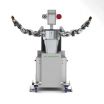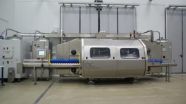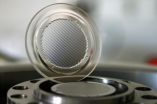Love-smitten consumers will do anything for their cars and guns
2010-12-23
(Press-News.org) The way people treat their possessions looks like love, according to a new study in the Journal of Consumer Research.
"Is it possible for consumers to be in love with their possessions?" ask authors John L. Lastovicka (Arizona State University) and Nancy J. Sirianni (Texas Christian University). When it comes to cars, computers, bicycles, and firearms, the answer seems to be a resounding yes.
The researchers visited five car shows in Arizona and conducted in-depth interviews with car enthusiasts (males and females, aged 19-68). They found that love-smitten consumers were more likely to use pet names than brand names when describing their cars and that some people seemed to use their attachment to cars to remedy pain and disappointment in their romantic lives.
"Material possession relationships may reduce the negative consequences of social isolation and loneliness, and can contribute to consumer well-being, especially when considered relative to less-desirable alternative responses like substance abuse, delinquency, and the side-effects of anti-depressant medications," the authors write.
The researchers found various combinations of passion, intimacy, and commitment in consumers' relationships. "Consumers felt a passion, or a relentless drive to be with their beloved possession, and this often manifested in gazing at and caressing their cars, and even some love-at-first-sight purchase decisions," the authors write.
People nurture relationships with their beloved possessions, investing time and money into improving them and becoming fluent in understanding their details. "We found love-smitten consumers spent six times more on accessories and enhancements for their prized guns than firearm owners who did not demonstrate passion, intimacy, or commitment toward their guns," the authors write.
These findings have significance for firms that sell accessories and after-purchase services such as cleaning, enhancements, and repairs. "For those in the throes of material possession love, it should be no wonder that they so freely spend their time and money on their beloved," the authors conclude.
###
John L. Lastovicka and Nancy J. Sirianni. "Truly, Madly, Deeply: Consumers in the Throes of Material Possession Love." Journal of Consumer Research: August 2011. Further information: http://ejcr.org.
END
ELSE PRESS RELEASES FROM THIS DATE:
2010-12-23
Adventure seekers are plunking down more than $50,000 to climb Mount Everest, but a new study in the Journal of Consumer Research finds that people who pay for transformative experiences often lack the communitarian spirit that usually defines such activities.
"In order to escape the rules, contraptions, and stresses of daily life in the city, many people search for new and liberating experiences that transcend their normal bureaucratic and corporate existence," write authors Gülnur Tumbat (San Francisco State University) and Russell W. Belk (York University). However, ...
2010-12-23
If a vegetarian has to buy a steakhouse gift certificate for a friend, her discomfort will lead her to buy something else that reaffirms her identity, according to a new study in the Journal of Consumer Research.
"When gift givers choose a gift that matches the identity of the recipient but is contrary to their own identity, they experience discomfort," write authors Morgan K. Ward (Southern Methodist University) and Susan M. Broniarczyk (University of Texas). This discomfort leads consumers to choose other products that express their identities.
The authors investigated ...
2010-12-23
Picture the following: With great care, a robot picks up a gear wheel in one hand, a housing in the other, and places the two together. When they don't immediately engage, it breaks off its movement. Slowly, it twists the gear wheel round a little and tries again. This time the wheel slots easily into its mounting. The robot smiles, and places the correctly assembled part on the conveyor belt. The pi4-workerbot is capable of making many more movements than a normal robot and is the jewel in the crown of the EU-funded PISA research project, which aims to introduce greater ...
2010-12-23
WASHINGTON, Dec. 22, 2010 — Just in time for New Year's Eve, and the arrival of the International Year of Chemistry, a study may settle that long-standing disagreement over the best way to pour a glass of champagne: Scientists in France are reporting that pouring bubbly in an angled, down-the-side way is best for preserving its taste and fizz.
The study also reports the first scientific evidence confirming the importance of chilling champagne before serving to enhance its taste. They reported in the American Chemical Society's Journal of Agricultural and Food Chemistry. ...
2010-12-23
The AZTI-Tecnalia technological centre, in a project undertaken by the Tecnolat and Llet de Catalunya dairy product companies within the FUTURAL project, has verified that, as an alternative to the traditional heat treatment for decontamination of a number of dairy products, high pressure technology is highly recommendable. In fact, according to a press release from Tecnolat, the results, especially with ready-to-eat fruit products and in the inactivation of moulds and yeasts in other dairy products, "were highly positive and promising".
The research and trials carried ...
2010-12-23
FINDINGS: By determining how corticosteroids act to increase production of red blood cell progenitors, Whitehead Institute researchers have identified a class of drugs that may be beneficial in treating some erythropoietin-resistant anemias. One such anemia is Diamond-Blackfan anemia (DBA), which is frequently treated with corticosteroids, despite their severe side-effects. The identified class of drugs may be able to treat other anemias, including those resulting from trauma, sepsis, malaria, kidney dialysis, and chemotherapy.
RELEVANCE: Some common anemias can be treated ...
2010-12-23
Researchers at Cleveland Clinic's Genomic Medicine Institute have revealed multiple genetic discoveries that may permit easier diagnosis and disease management for Cowden syndrome patients who are predisposed to breast and kidney cancer.
The research, which could allow for earlier discovery of cancerous tumors, is published in the Dec. 22 issue of the Journal of the American Medical Association (JAMA).
Charis Eng, M.D., Ph.D, Chair of the Genomic Medicine Institute at Cleveland Clinic, led the research. It revealed KILLIN as a novel predisposition gene for Cowden ...
2010-12-23
December 21, 2010 — (BRONX, NY) — Two researchers at Albert Einstein College of Medicine of Yeshiva University have found that our 98.6° F (37° C) body temperature strikes a perfect balance: warm enough to ward off fungal infection but not so hot that we need to eat nonstop to maintain our metabolism.
"One of the mysteries about humans and other advanced mammals has been why they are so hot compared with other animals," said study co—author Arturo Casadevall, M.D., Ph.D., professor and chair of microbiology & immunology at Einstein. "This study helps to explain why mammalian ...
2010-12-23
Projectors are getting smaller and smaller. Now that pictures are available in digital format almost everywhere, we need projectors to beam giant photos and films onto walls. Projectors contain lenses that spread the light from the pixelated source in such a way as to illuminate the image area evenly. Until now, this was done using complicated arrays of lenses placed one behind the other. Recently, the same effect has been achieved using flat lens arrays made up of thousands of identical microlenses. This kind of array takes up much less space and does not need to be painstakingly ...
2010-12-23
The only way to learn if your water source has hexavalent chromium is to check with your public water supplier and request a water quality report, said NJIT Professor Taha Marhaba, a civil/environmental engineer. Most municipal or city engineers should be able to provide such a report upon request. Additional information specifically about hexavalent chromium levels may also be available.
"In general, hexavalent chromium can be found in either surface or groundwater sources and its source can be either natural or man-made industrial operations that have used chromium," ...
LAST 30 PRESS RELEASES:
[Press-News.org] Love-smitten consumers will do anything for their cars and guns


